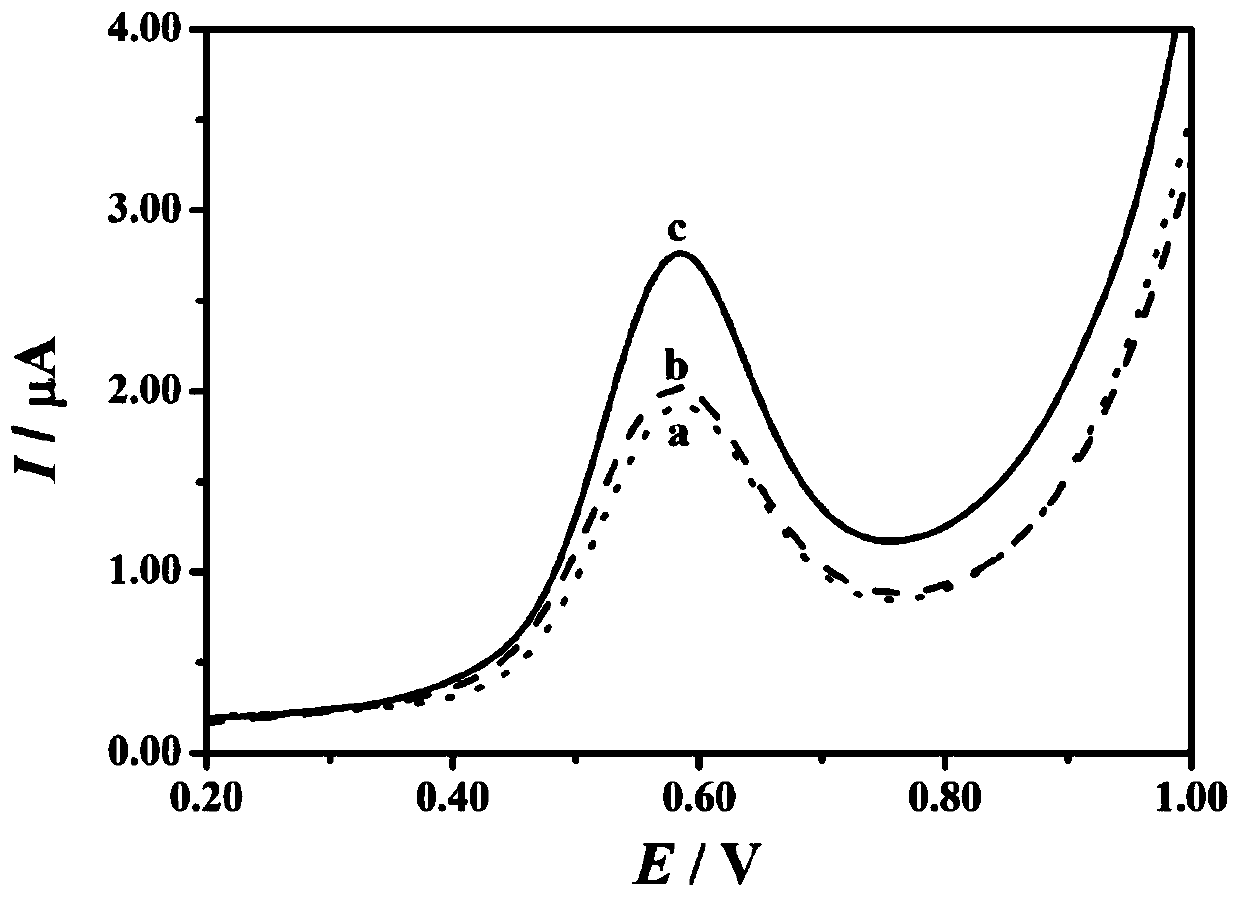Electrochemical detection method of capsaicins in illegal cooking oil
A detection method, waste oil technology, applied in the field of electrochemical detection, can solve the problems of complicated instrument maintenance, complicated antibody preparation, and cross-reaction, and achieve the effects of low production cost, efficient quantitative detection, and simple production process
- Summary
- Abstract
- Description
- Claims
- Application Information
AI Technical Summary
Problems solved by technology
Method used
Image
Examples
Embodiment 1
[0055] The present embodiment proposes the electrochemical detection method of capsaicinoids described in a kind of waste oil, specifically comprises the following steps:
[0056] (1) AuNPs / Fe 3 o 4 Synthesis of Nanocomposites:
[0057] Magnetic Fe 3 o 4 Nanoparticles dispersed in HAuCl containing 0.05mmol / L 4 , 125.0mmol / L isopropanol and 10.0mg / mL polyvinyl alcohol aqueous solution, the formation of 1.0mg / mL Fe 3 o 4 A mixed solution of nanoparticles; ultrasonically disperse the mixed solution for 20min with an ultrasonic power of 120W, place it in a glass reagent bottle, and irradiate it with a high-energy electron beam of 10.0MeV at a dose of 6kGy to obtain uniformly dispersed AuNPs / Fe 3 o 4 Nanocomposite materials, and then stored in a refrigerator at 4°C, protected from light;
[0058] (2) AuNPs / Fe 3 o 4 - Preparation of ATP-azo-Caps complex:
[0059] a. The AuNPs / Fe prepared in the above step (1) 3 o 4 Mix the nanocomposite material with an equal volume o...
Embodiment 2
[0069] In this embodiment, the AuNPs / Fe 3 o 4 The morphology of nanocomposites was characterized, and the results are shown in figure 2 . Gold nanoparticles successfully encapsulated in magnetic Fe 3 o 4 particle surface, the complex has a large specific surface area, and the magnetic Fe 3 o 4 Particle stability and dispersibility are enhanced.
Embodiment 3
[0071] DPV detection method was used to investigate the electrochemical behavior of capsaicinoids, the results are shown in image 3 . Under the same concentration (0.50ng / mL), the electrochemical detection of capsaicin (dotted line a) and dihydrocapsaicin (short horizontal line b) was carried out, and it was found that the two had the same oxidation peak potential and similar Oxidation peak current. After mixing capsaicin and dihydrocapsaicin aqueous solution (solid line c), it was found that the oxidation peak potential was unchanged, and the oxidation peak current was approximately the sum of the peak currents when the two were detected separately. Therefore, it is speculated that capsaicinoids have the same electrochemical behavior. Therefore, capsaicin was used as a representative to establish and evaluate the electrochemical detection method of capsaicinoids.
PUM
 Login to view more
Login to view more Abstract
Description
Claims
Application Information
 Login to view more
Login to view more - R&D Engineer
- R&D Manager
- IP Professional
- Industry Leading Data Capabilities
- Powerful AI technology
- Patent DNA Extraction
Browse by: Latest US Patents, China's latest patents, Technical Efficacy Thesaurus, Application Domain, Technology Topic.
© 2024 PatSnap. All rights reserved.Legal|Privacy policy|Modern Slavery Act Transparency Statement|Sitemap



